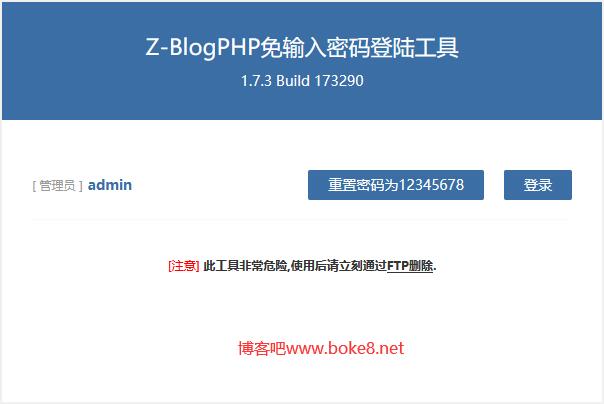在zblog主题或插件应用开发中,难免会有新增数据库表的需求,直接手动在数据库中新增对于自用应用影响不大,但对于面向众多用户的收费应用就显得很不友好了,因此,通过代码在应用启用的时间自动创建对应的数据库表就很有必要。下面是博客吧转自Z-Blog官方文库Wiki的以收藏文章功能为例演示zblog php关于自定义数据库表的教程,介绍了建表与增删改查,较为详细。
提示:该教程代码只验证了MySQL数据库,其余的需要自行验证。
建表教程
声明定义数据表结构
1 2 3 4 5 6 7 8 9 10 11 12 13 14 15 16 17 18 19 20 21 22 23 24 25 26 27 28 | function 插件ID_defineDatabase() { $database = array( /** * 收藏表 */ '插件ID_Collect' => array( 'table' => '%pre%插件ID_collect', 'datainfo' => array( 'ID' => array('cc_ID', 'integer', '', 0), 'UID' => array('cc_UID', 'integer', '', 0), 'LogID' => array('cc_LogID', 'integer', '', 0), 'CreateTime' => array('cc_CreateTime', 'integer', '', 0), 'Meta' => array('cc_Meta', 'string', '', ''), ), ), ); foreach ($database as $key => $v) { $table = $v['table']; $datainfo = $v['datainfo']; $GLOBALS['table'][$key] = $table; $GLOBALS['datainfo'][$key] = $datainfo; } return $database; } 插件ID_defineDatabase(); |
这是一个声明插件数据表结构的函数。为什么要在定义函数以后就执行?因为需要在插件运行前,将结构信息赋值到全局变量中,来自于c_system_base.php同类风格的声明结构,并不表示就是固定格式,其中建议以类的名称为数据库表的声明key,方便后期的可读性。
- 字段“table”是数据表的名称,用%pre%+插件ID+数据表名称的方式组成。
- 字段“datainfo”是数据字段的结构,有具体的声明结构,可以在zb_system/function/lib/sql/中查看不同数据库的语句拼接。
- 关于datainfo的声明结构说明:根据声明的顺序,数组第一条在MySQL中会加上索引(PRIMARY KEY)。
声明的代码结构
1 | array('字段名', '类型', '长度参数(根据类型定义)', '默认值'); |
下面是简单演示常用类型的声明,具体的类型可以自行补充MySQL的基础知识
1 2 3 4 5 6 7 8 9 10 11 12 13 14 15 16 17 | // int array('ID', 'integer', '', 0), // tinyint array('Type', 'integer', 'tinyint', 0), // bigint array('EndTime', 'integer', 'bigint', 0), // char array('Value', 'char', 10, ''), // varchar array('Title', 'string', 250, ''), // longtext array('Content', 'string', '', ''), |
写一个创建数据库表的方法,在启用主题或插件应用的时候执行
1 2 3 4 5 6 7 8 9 10 11 12 13 14 15 16 17 18 19 20 21 22 23 24 25 26 27 28 | function 插件ID_createTable() { global $zbp; $database = 插件ID_defineDatabase(); foreach ($database as $k => $v) { if (!$zbp->db->ExistTable($v['table'])) { $s = $zbp->db->sql->CreateTable($v['table'], $v['datainfo']); $zbp->db->QueryMulit($s); } } } // 删表的方法 具体什么时候删,自行决定 function 插件ID_delTable() { global $zbp; $database = 插件ID_defineDatabase(); foreach ($database as $k => $v) { if ($zbp->db->ExistTable($v['table'])) { $s = $zbp->db->sql->DelTable($v['table']); $zbp->db->QueryMulit($s); } } } |
在插件的启用函数中调用
1 2 3 4 | function InstallPlugin_插件ID() { 插件ID_createTable(); } |
接下来声明一个类继承Base完成基本的增删改查操作
1 2 3 4 5 6 7 8 9 10 11 12 13 14 15 16 | class 插件ID_Collect extends Base { /** * 在构造函数中 * 将定义的数据表名称与数据结构交给父类Base去处理 */ public function __construct() { global $zbp; parent::__construct($zbp->table['插件ID_Collect'], $zbp->datainfo['插件ID_Collect'], __CLASS__); // 因为数据中有一条创建时间字段,提前在此赋予默认值 $this->CreateTime = time(); } } |
基于这个类,就可以进行基本的curd了
操作类进行增删改
1、新增一条数据
1 2 3 4 5 6 7 8 9 | function 插件ID_addCollect($userId, $logId) { $collect = new 插件ID_Collect(); $collect->UID = $userId; $collect->LogID = $logId; $collect->Save(); // 保存后,$collect->ID就能输出这条记录的ID了 echo '添加成功'; } |
如果不操作类进行增加,也可以使用sql插入数据,参考:
1 2 3 4 5 6 7 8 9 10 11 12 13 14 15 | function 插件ID_addCollect($userId, $logId){ $dataArr = array( 'UID' = $userId, 'LogID' = $logId ); $sql= $zbp->db->sql->insert($GLOBALS['table']['插件ID_addCollect'],$dataArr); $insert = $zbp->db->insert($sql); if($insert){ echo '添加成功'; die(); }else{ echo '添加失败'; die(); } } |
2、更新一条数据
1 2 3 4 5 6 7 8 9 10 | function 插件ID_updateCollect($collectId) { $collect = new 插件ID_Collect(); $status = $collect->LoadInfoByID($collectId); if ($status) { $collect->CreateTime = time(); $collect->Save(); } // 这样收藏的时间就变成了最新的 } |
3、删除一条数据
1 2 3 4 5 6 7 8 | function 插件ID_delCollect($collectId) { $collect = new 插件ID_Collect(); $status = $collect->LoadInfoByID($collectId); if ($status) { $collect->Del(); } } |
4、查询数据,单独阐述:已知ID的情况,通过上面演示的LoadInfoByID($ID) 就能通过父类Base的方法读取一条数据,在只知道UID和LogID,就需要组装where语句。
1 2 3 4 5 6 7 8 9 10 11 12 13 14 | function 插件ID_getUserCollect($userId, $logId) { global $zbp; $w = array(); $w[] = array('=', 'cc_UID', $userId); $w[] = array('=', 'cc_LogID', $logId); $sql = $zbp->db->sql->Select($zbp->table['插件ID_Collect'], array('*'), $w); $list = $zbp->GetListType('插件ID_Collect', $sql); if (count($list) > 0) { return $list[0]; } return false; } |
其它的查询,比如查询某用户的指定数量收藏记录
1 2 3 4 5 6 7 8 9 10 11 12 | function 插件ID_getUserCollectList($userId, $num = 10) { global $zbp; $w = array(); $w[] = array('=', 'cc_UID', $userId); $num = (int) $num > 0 ? (int) $num : 10; $sql = $zbp->db->sql->Select($zbp->table['插件ID_Collect'], array('*'), $w, null, $num); $list = $zbp->GetListType('插件ID_Collect', $sql); return $list; } |
扩展:多说插件参考
1 2 3 4 5 6 7 8 9 10 11 12 13 14 15 16 17 18 19 | #表名 $table['plugin_duoshuo_comment'] = '%pre%plugin_duoshuo_comment'; ###注意表名要加上%pre%可以区分同一数据库中的不同的程序所生成的表 #表结构 $datainfo['plugin_duoshuo_comment'] = array( 'ID' => array('ds_ID','integer','',0), 'key' => array('ds_key','string',128,''), 'cmtid' => array('ds_cmtid','integer','',0) ); #全局声明 global $zbp; #判断是否已创建,否则新建数据表 if(!$zbp->db->ExistTable($GLOBALS['table']['plugin_duoshuo_comment'])) { $s = $zbp->db->sql->CreateTable($GLOBALS['table']['plugin_duoshuo_comment'],$GLOBALS['datainfo']['plugin_duoshuo_comment']); $zbp->db->QueryMulit($s); } |
有区别,但可参考。
教程原地址:https://wiki.zblogcn.com/doku.php?id=zblogphp:development:plugin:自定义数据库表











